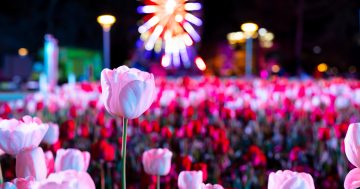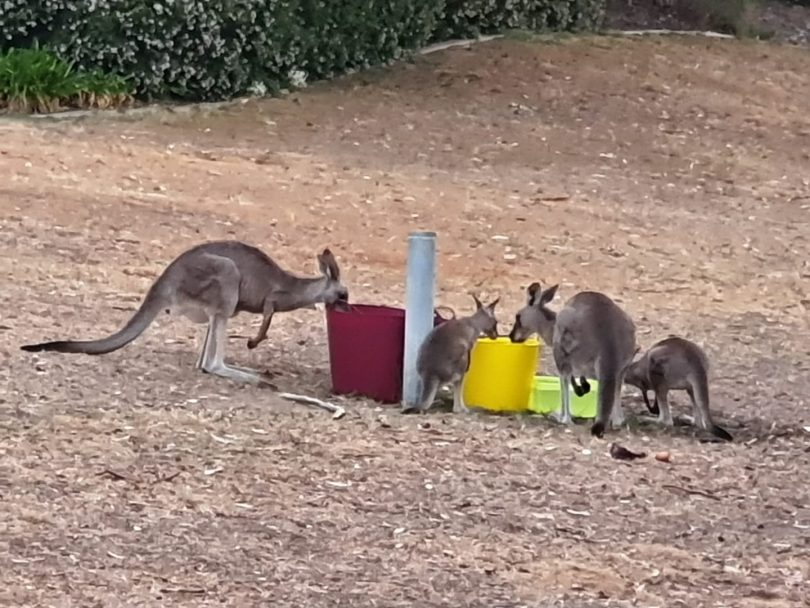
‘Customers’ (as they’re sometimes called) hoping in for a drink. Photos: Supplied.
A simple idea to place containers of water in Canberra neighbourhoods or reserves to aid thirsty wildlife during the drought has received a flood of support.
In just three weeks, Water Our Wildlife, started by Anna Reimondos of Weston and her friends Claire Stewart, Michele Woods and Alexandra Craig, has swollen to more than 4000 members via their Facebook page, with more than 500 watering stations established across the ACT.
The group has been inundated with offers of containers, big and small, from theatre nurses at Calvary Public Hospital, the Salvos at Fyshwick and the Green Shed at Mitchell.
But there’s no central donation or collection point. Offers on the Facebook page are taken up by any interested member, who then takes responsibility for their own stations.
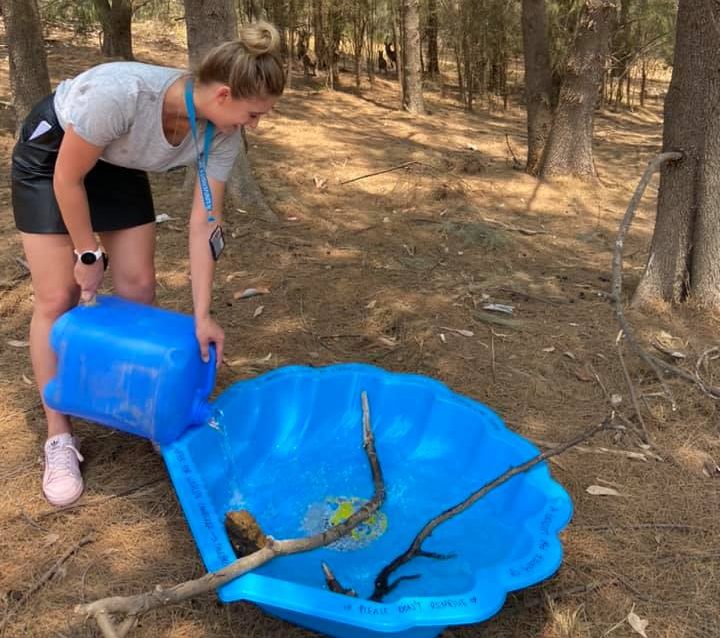
Grace Standish fills her clamshell station.
It’s more organised chaos than a movement and Ms Reimondos, a demographer at the ANU, says the response has been very surprising. She is not a wildlife expert but loves animals and has established various rescue groups and charities, including the Lost Pet Database.
“Maybe it’s because a lot of people feel quite helpless with everything that’s going on and this is a small thing they can do to help,” she said.
The idea sprung from Ms Reimondos putting water out in the yard for the local magpies.
“It got me and my friends thinking about all the animals in the reserve, how they don’t have anywhere to have a drink of water,” she said. “We started putting a few tubs out and thought we’d have a map so people could plot where the tubs are and help each other, and it’s just taken off.”
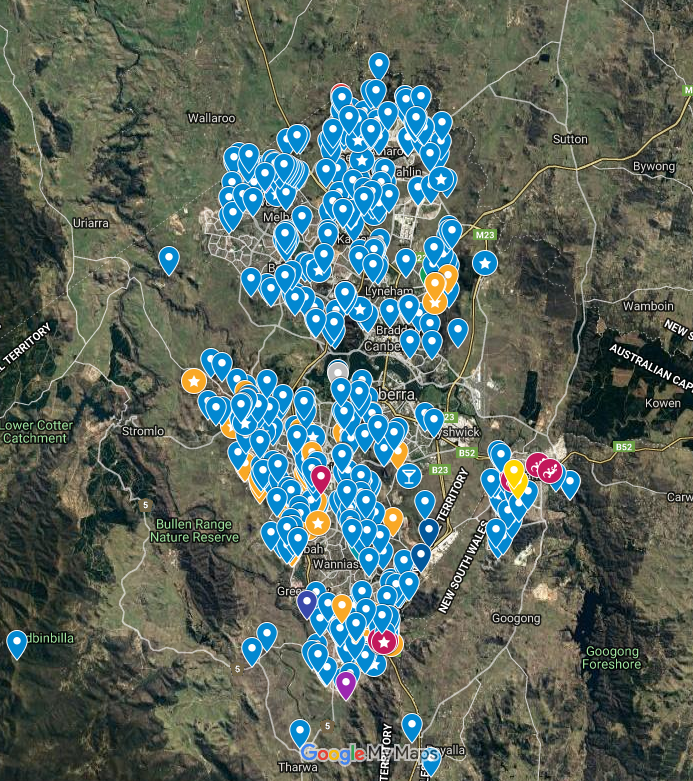
Where the stations are in the ACT.
The map has been key, and there are even micro-communities such as the chat group established for people who live around Mount Stromlo so they can help coordinate filling each others’ tubs.
She has started visiting stations to verify them and members are asked to check on their stations to ensure they are still working as some larger animals like kangaroos can break them.
Container sizes range from small bowls for tiny creatures, including insects, to kitty litter containers for birds to clamshells for the bigger animals.
People are encouraged to place sticks in them so if any creature falls in they can get out.
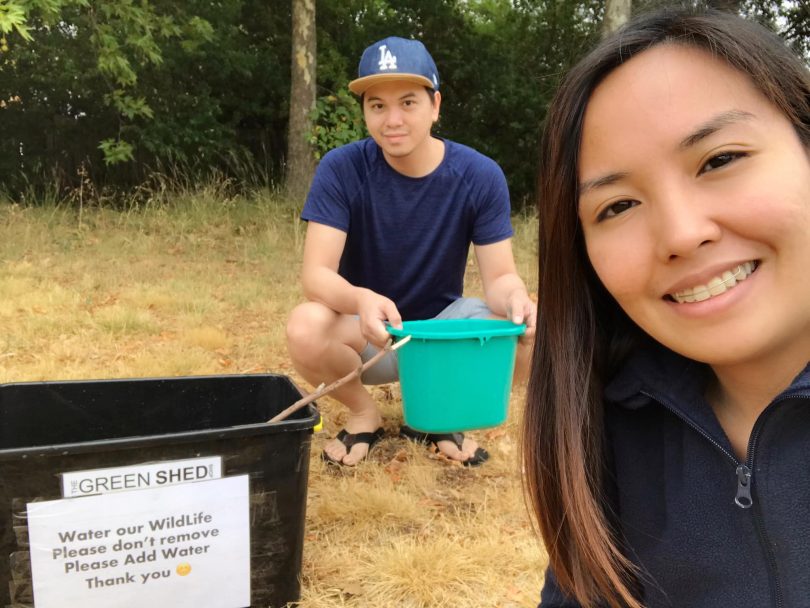
Reginald Diego and Sandra Ampoloquio at their station.
For those with stations in more isolated locations, motion sensor video cameras are available on loan so they can see what animals turn up to drink.
But the brief is just for water, says Ms Reimondos, not food, which can be a complex and controversial matter.
She says that until there is ”good, proper rain”, people will keep putting out their tubs, and will likely return next summer the way the climate is changing.
While people power is obviously working, something less anarchic would also be welcome.
“It would be great to see more permanent water stations put out by the government as well,” she said.
